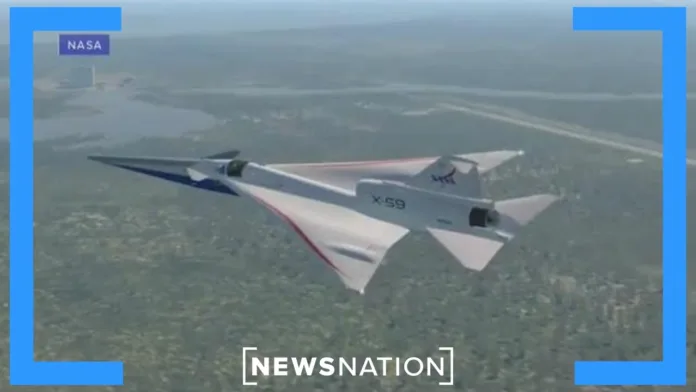Revolutionary X-59 design aims to break sound barriers and reshape commercial air travel
In a groundbreaking collaboration, NASA and Lockheed Martin have unveiled the X-59, a futuristic aircraft affectionately dubbed the ‘Son of Concorde,’ poised to usher in a new era of supersonic air travel. The unveiling brings forth the promise of reducing the flight time from New York to London to a mere three and a half hours – a feat unimaginable with conventional jetliners.
Supersonic flight over land has long been hampered by the disruptive sonic boom produced when an aircraft surpasses the speed of sound at 767 miles per hour. However, the X-59 introduces a sleek and innovative design, featuring a long tapered nose that aims to mitigate the notorious noise, potentially allowing for supersonic flight over populated areas.
The aircraft, a pivotal component of NASA’s Quesst mission, aims to challenge existing regulations that prohibit commercial supersonic flight over land. The X-59’s distinctive design positions the cockpit approximately halfway down the plane, featuring a tapered nose that serves both aerodynamic and noise-reducing purposes.
Interestingly, the cockpit’s unconventional location means pilots rely on a sophisticated system of high-resolution cameras feeding a 4K monitor, as their direct line of sight is obscured. This bold design choice reflects NASA’s commitment to pushing the boundaries of aviation technology.
Pam Melroy, NASA Deputy Administrator, expressed pride in the project’s progress, stating, “NASA’s X-59 will help change the way we travel, bringing us closer together in much less time.” The X-59 is envisioned as a catalyst for revisiting regulations and ushering in a new era of commercial supersonic travel.
Despite its groundbreaking potential, the X-59 remains an experimental airplane designed to showcase the feasibility of muted supersonic flight. The current iteration appears to prioritize functionality over passenger comfort, with a glimpse inside revealing a confined cockpit that leaves little room for passengers and luggage.
Bob Pearce, associate administrator for aeronautics research at NASA Headquarters, emphasized the project’s ambition, stating, “By demonstrating the possibility of quiet commercial supersonic travel over land, we seek to open new commercial markets for U.S. companies and benefit travelers around the world.”
As the aviation industry takes a bold leap into uncharted territories, the X-59’s imminent maiden flight later this year will serve as a momentous occasion, marking the first step towards realizing the vision of quiet and efficient supersonic air travel.
